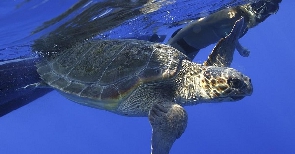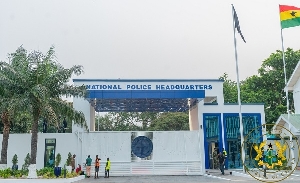Eleven sea turtles from the country’s territorial waters – out of a total thirty-nine rescued since 2019 – were nearly stolen by turtle poachers, the Environmental Justice Foundation (EJF) has said.
The EJF said the turtles would have been taken away by the poachers if not for the organisation’s timely intervention through conservation projects along the coast.
In Ghana, sea turtles are commonly poached when coming to nest on the shore or unintentionally entangled in fishing nets. Nest-destruction by dogs and coastal development also pose serious problems. This means taking action now to protect sea-turtles is essential to ensure their continued survival and maintain the significant benefits they bring to coastal communities, says EJF.
The rescues were made possible through a community-led approach to protecting sea-turtles.
A statement from the EJF to commemorate World Turtle Day indicated that sea-turtle species are declining in Ghana, and they are threatened globally.
“Eleven of the turtles were found by poachers during the nesting period, but EJF’s patrol teams successfully persuaded them to release the turtles back to sea,” the statement said.
EJF CEO and Co-Founder Steve Trent said: “When sea-turtle populations decline, the vital roles they play in ocean ecosystems disappear with them. This means that restoring thriving sea-turtle populations brings a direct economic benefit for fishers and coastal communities in Ghana. It is time to protect sea-turtles, and rebuild their populations to ensure healthy and resilient oceans for the future”.
Of the 39 safe releases achieved by EJF, 28 were turtles caught mistakenly by fishers. The turtles were entangled in their nets, and the fishers wanted to sell them to turtle meat processors to offset the cost of their damaged nets. However, the patrol teams were able to negotiate with the fishermen and the turtles were released back into the sea.
The turtles came from a range of species – including 27 Olive Ridleys, five Leatherbacks, five Green Turtles, one Hawksbill and one Loggerhead.
Indeed, Leatherbacks are the largest sea-turtle species and undertake the longest migrations between breeding and feeding areas of any sea turtle; averaging an astonishing 3,700 miles each way.
The EJF conservation efforts are protecting turtles and also the wider ocean ecosystem. Studies show that sea-turtles play a vital role in maintaining healthy oceans and fisheries by grazing on seagrass, maintaining coral reefs and regulating populations of the jellyfish which prey on fish eggs. In addition, the eggs sea-turtles lay on Ghana’s beaches supply nutrients that support coastal ecosystems.
EJF’s turtle project is implemented in Gomoa Fetteh and Senya Breku, two coastal communities located in the Gomoa East district in the Central Region of Ghana.
Business News of Thursday, 25 May 2023
Source: thebftonline.com

















